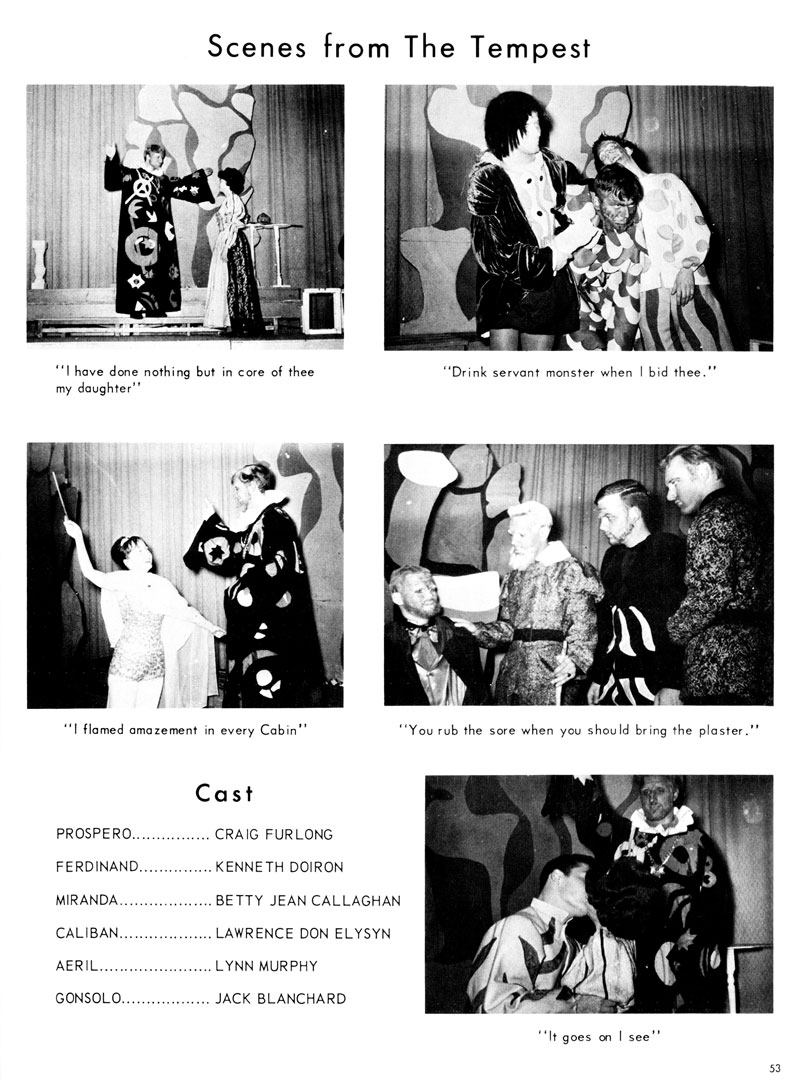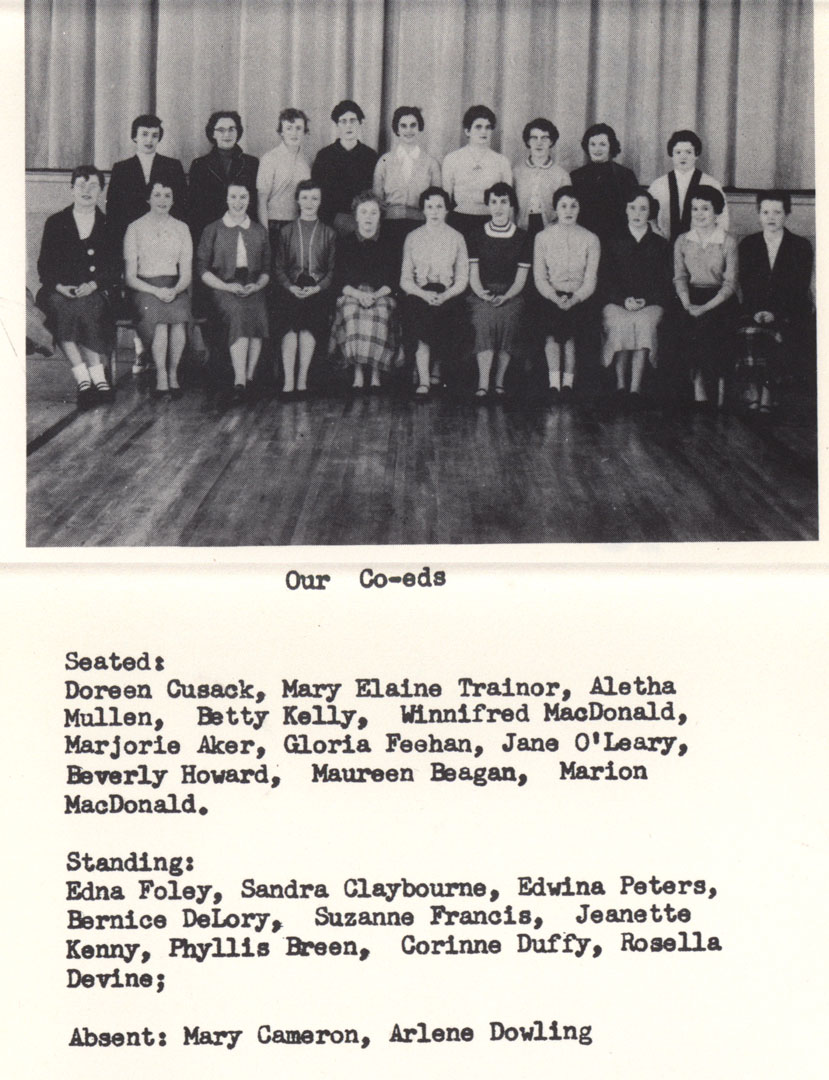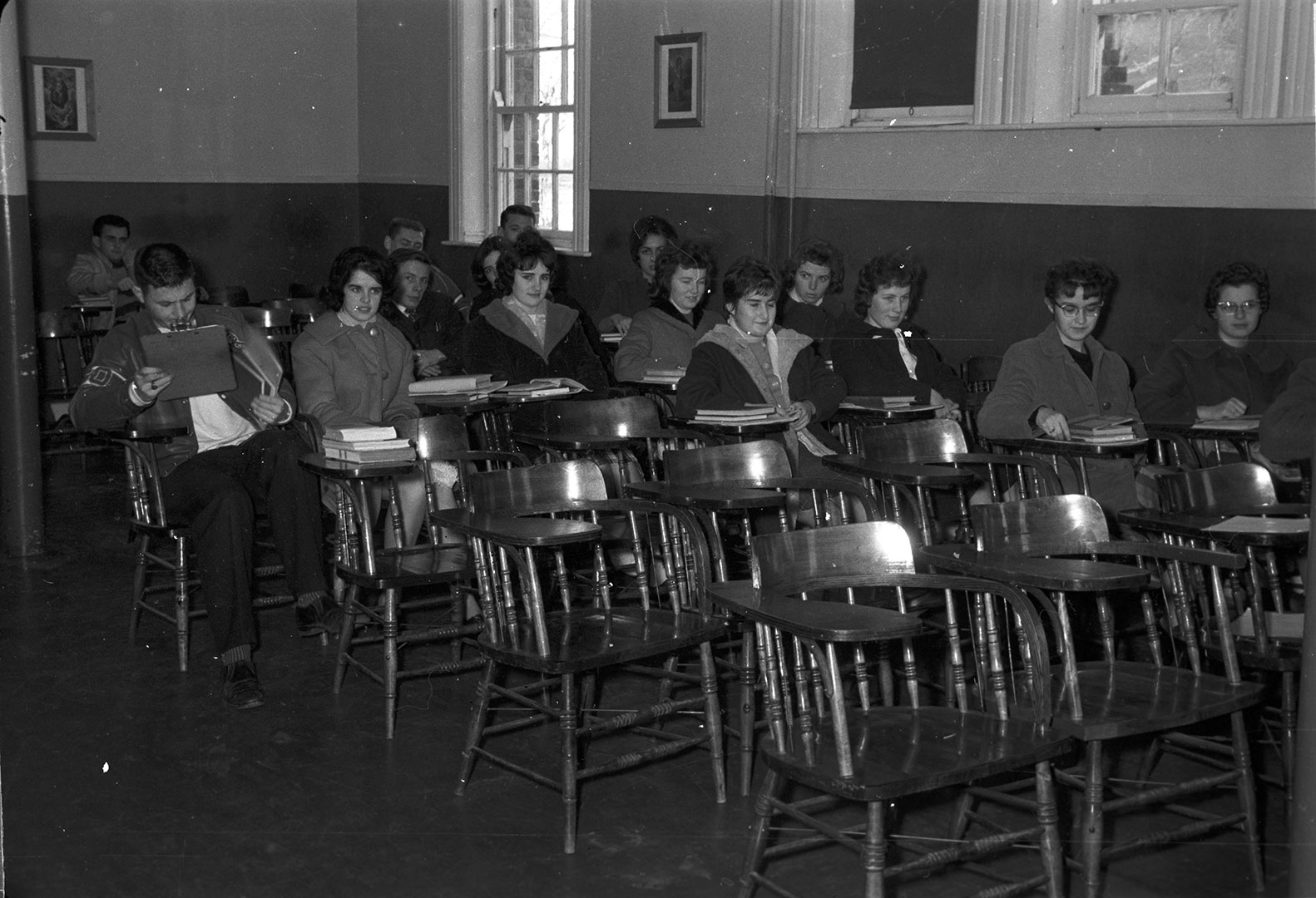
Though they were a growing presence on-campus, female students often found it preferable to “stick together”, as this photo from the 1961-1962 academic year suggests. G. Harris SDU Photographic Collection (UPEI Archives Acc #: 2013-250), Image 34-0550.
Though they were a growing presence on-campus, female students often found it preferable to “stick together”, as this photo from the 1961-1962 academic year suggests. G. Harris SDU Photographic Collection (UPEI Archives Acc #: 2013-250), Image 34-0550.
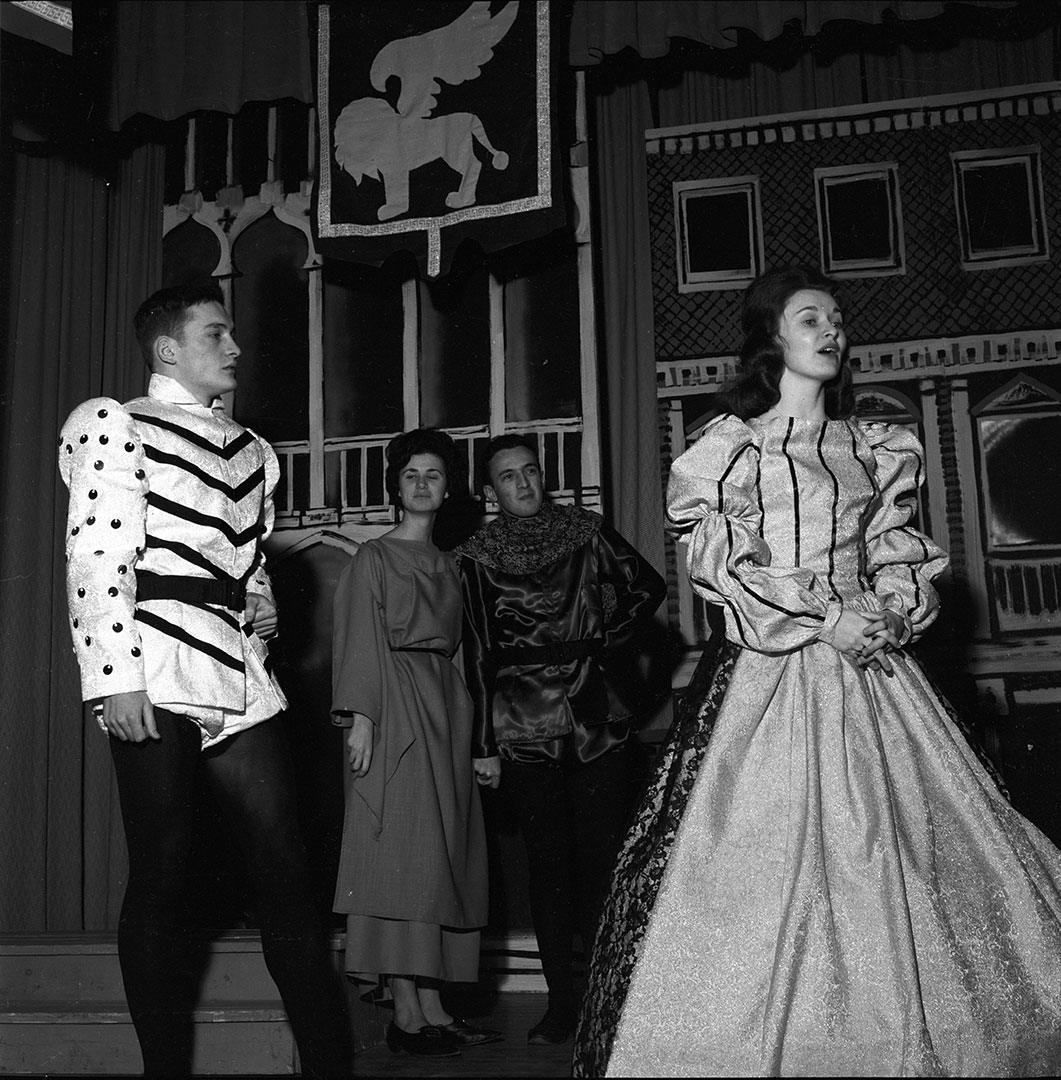
SDU campus theatre came fully into its own in the 1950s and 1960s, with the Dramatics Society typically staging two or three productions each year, often in cooperation with the Glee Club. Tackling larger and more ambitious shows became easier as the student body grew, and, of course, the pool of available talent for female roles expanded significantly as SDU became increasingly coeducational. Here, Patricia Leightizer performs as Portia in the 1963 production of “The Merchant of Venice,” which later won six awards at the Dominion Drama Festival. G. Harris SDU Photographic Collection (UPEI Archives Acc #: 2013-250), Image 38-0622.
SDU campus theatre came fully into its own in the 1950s and 1960s, with the Dramatics Society typically staging two or three productions each year, often in cooperation with the Glee Club. Tackling larger and more ambitious shows became easier as the student body grew, and, of course, the pool of available talent for female roles expanded significantly as SDU became increasingly coeducational. Here, Patricia Leightizer performs as Portia in the 1963 production of “The Merchant of Venice,” which later won six awards at the Dominion Drama Festival. G. Harris SDU Photographic Collection (UPEI Archives Acc #: 2013-250), Image 38-0622.
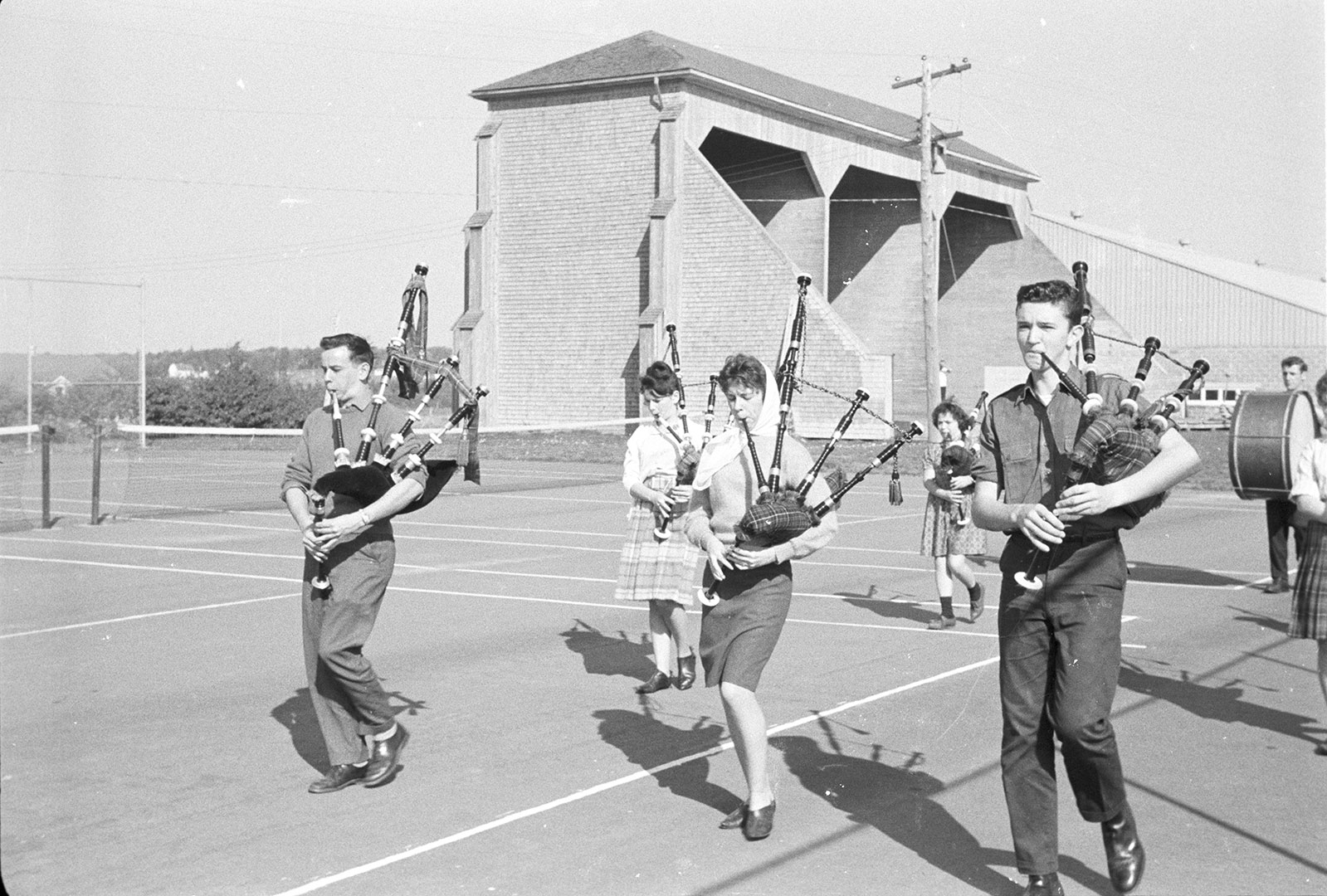
Male and female students practicing pipes and drums together on the SDU tennis courts in the Autumn of 1961. This photo is also notable for including one of the last known views of the cavernous handball alleys — dubbed the “Elephant Pens” by earlier generations of SDU students — which would soon be torn down for badly-needed parking. G. Harris SDU Photographic Collection (UPEI Archives Acc #: 2013-250), Image 38-0622.
Male and female students practicing pipes and drums together on the SDU tennis courts in the Autumn of 1961. This photo is also notable for including one of the last known views of the cavernous handball alleys — dubbed the “Elephant Pens” by earlier generations of SDU students — which would soon be torn down for badly-needed parking. G. Harris SDU Photographic Collection (UPEI Archives Acc #: 2013-250), Image 38-0622.
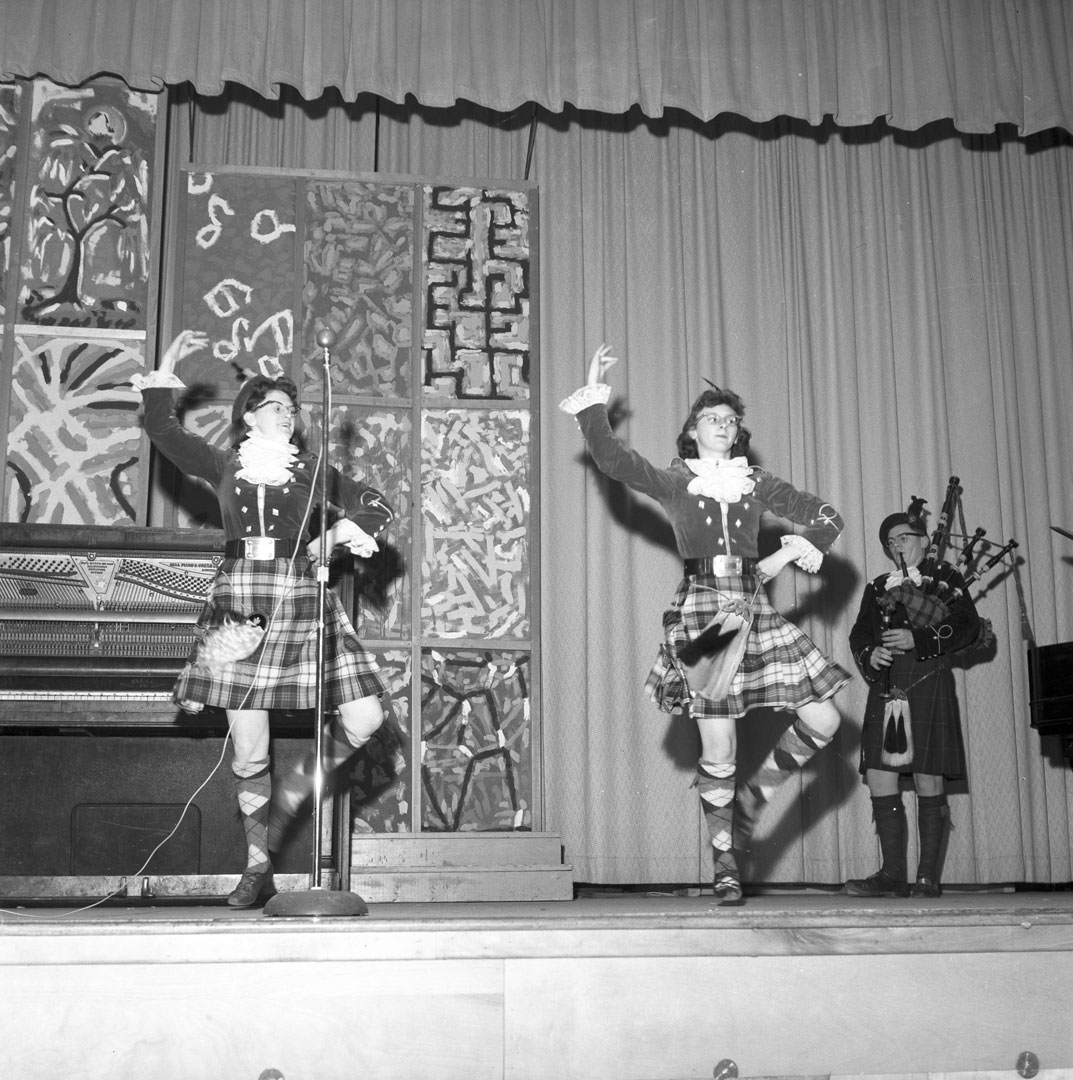
Though acceptance of female students in some aspects of campus life was still limited during the early 1960s (and even, in a few cases, denied entirely), the participation of women in music and other cultural pursuits was generally welcomed, as suggested in this image, taken at the 1963 Winter Carnival. G. Harris SDU Photographic Collection (UPEI Archives Acc #: 2013-250), Image 12-7693.
Though acceptance of female students in some aspects of campus life was still limited during the early 1960s (and even, in a few cases, denied entirely), the participation of women in music and other cultural pursuits was generally welcomed, as suggested in this image, taken at the 1963 Winter Carnival. G. Harris SDU Photographic Collection (UPEI Archives Acc #: 2013-250), Image 12-7693.
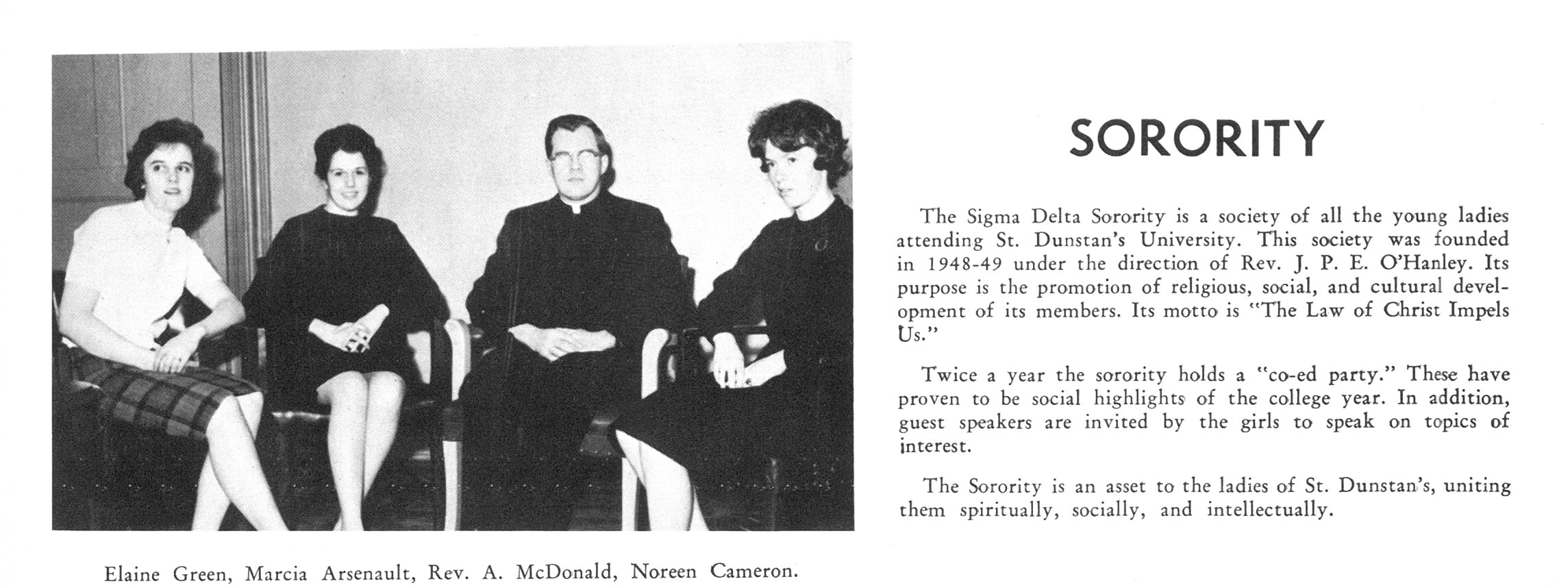
One of the first organizational initiatives of the SDU coeds, as a group, was the formation of the Sigma Delta Sorority in 1949, “open to all young ladies who have attended or who are attending St. Dunstan’s.” Though the Sorority’s stated goals were lofty — “the religious, social and cultural development of its members” — it was certainly not cheerless: indeed, by the early 1960s, the Sorority’s twice-annual “co-ed parties” were hailed as highlights of the campus social scene. Mnemosyne 1963. p. 44.
One of the first organizational initiatives of the SDU coeds, as a group, was the formation of the Sigma Delta Sorority in 1949, “open to all young ladies who have attended or who are attending St. Dunstan’s.” Though the Sorority’s stated goals were lofty — “the religious, social and cultural development of its members” — it was certainly not cheerless: indeed, by the early 1960s, the Sorority’s twice-annual “co-ed parties” were hailed as highlights of the campus social scene. Mnemosyne 1963. p. 44.
